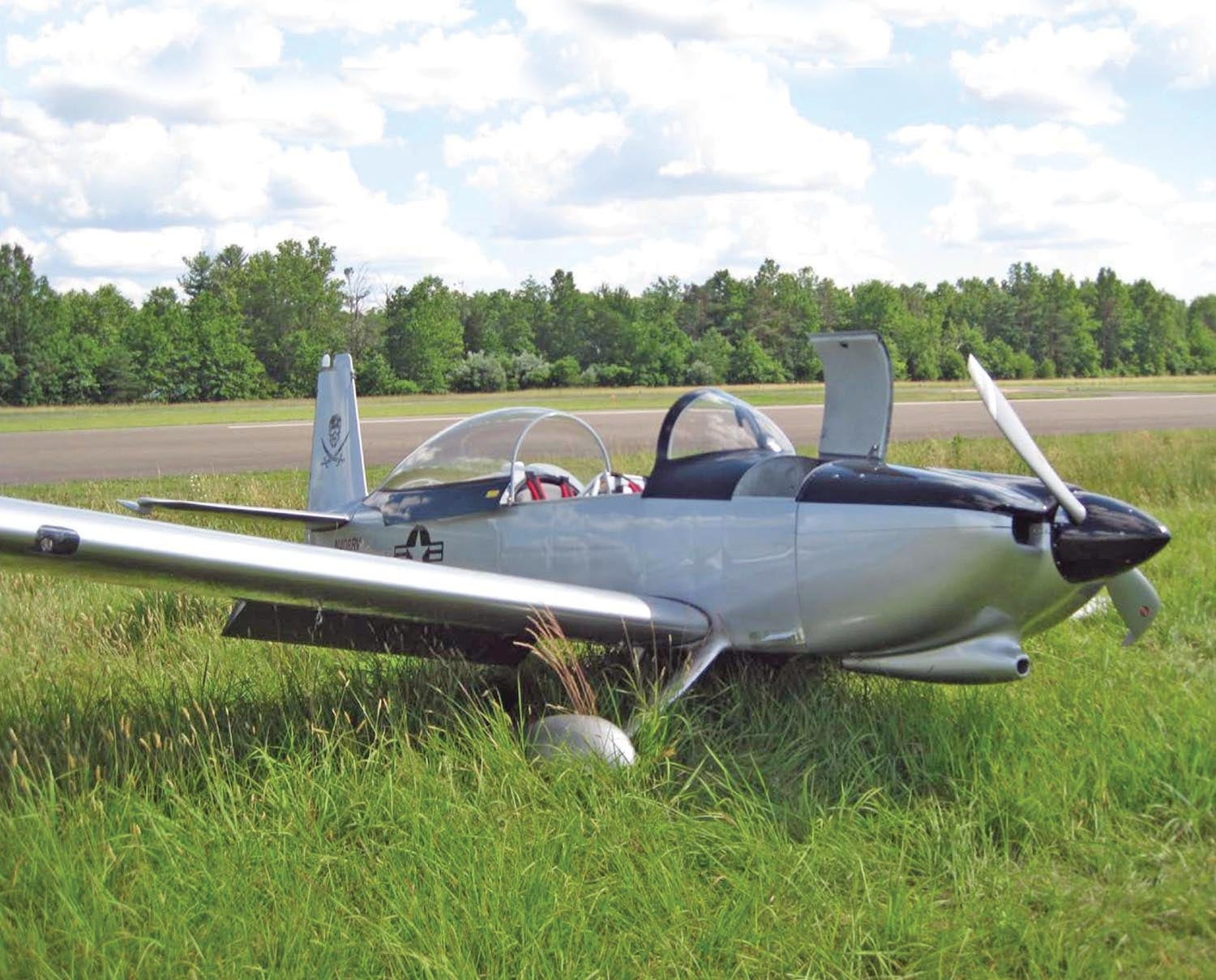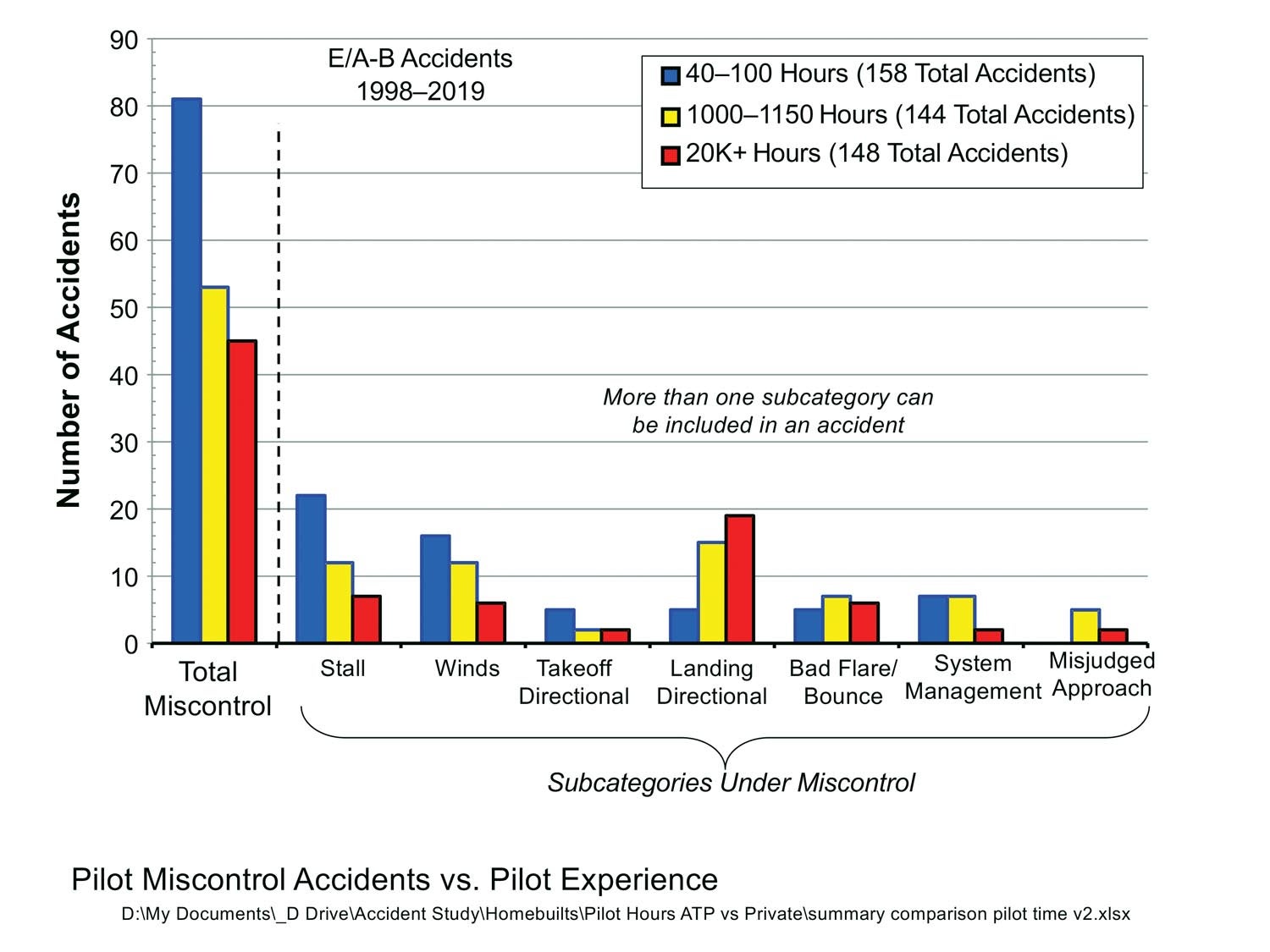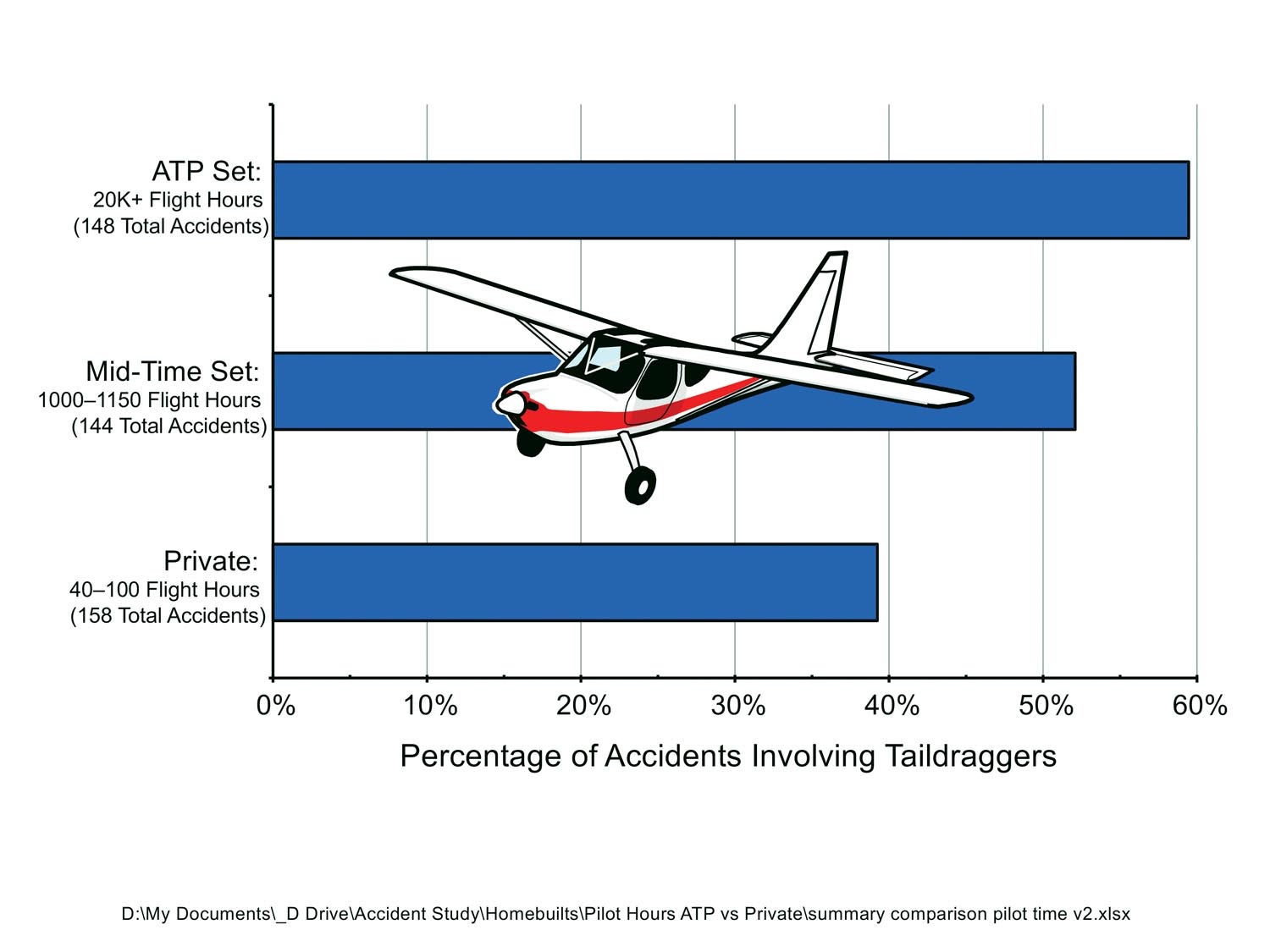
Considerable insights can be gained by examining aircraft accident statistics. But sometimes—well, the results aren’t earth-shattering, but can be interesting nonetheless.
Take the issue of pilot experience. We would certainly expect more-experienced pilots to make fewer mistakes. But what’s the actual difference?
It’s not something that’s only relevant to homebuilts. But my Experimental/Amateur-Built aircraft accident database gives us the opportunity to easily compare the accident causes for pilots at various levels of experience.
One little surprise does pop up…
Data
About 4000 accidents in my 22-year database (1998–2019) include the pilot’s total time. Pilots involved in homebuilt accidents have a median total flight time of about 1000 hours. The most experienced pilot had 42,000 hours. On the other end of the spectrum, 10 accidents featured pilot total time of zero hours. Most were ultralight-type vehicles, although the aircraft had N-numbers.

We don’t have a reliable source of statistics regarding the distribution of flying experience across the entire homebuilt fleet. So we’ll use the accident database and compare the causes of accidents. We’ll set up three sets, nearly equal in size, to compare. The sets will include all homebuilt accidents where the pilot’s total time was within the given range.
One hundred and forty-eight accidents occurred to pilots with 20,000 or more hours. We’ll call this the “ATP” set, though not all had airline transport pilot ratings (and not all ATPs are included).
A good comparison would be newly minted private pilots, so the second comparison set covers pilots who had 40 to 100 hours at the time of their accident. With 158 total accidents, it provides a close match in size to our ATP group. We’ll refer to these as the “Private” group, although, again, not all have private certificates.
We need something in the middle, so why not look at pilots around our 1000-hour median? There are 144 cases in the 1000- to 1150-hour range; we’ll call these the “Mid-Time” set.

Comparing the Accident Causes
The primary factor to be concerned with is pilot miscontrol. This category covers errors in the physical control of the aircraft. It doesn’t include judgment issues such as running out of fuel.
Results are probably pretty much as expected: About 51% of the accidents in the Private set are due to miscontrol, versus 37% for the Mid-Time set and 30% for the ATPs.
I’ll admit the ATP results came out higher than I expected. Part of the explanation came out when the miscontrol accidents were looked at in more detail, as seen in Figure 1. As one might predict, the number of stall- or wind-related accidents decreased with pilot experience.

What was a surprise was the result under “Landing Directional.” This category refers to the pilot losing directional control during landings. Note that Figure 1 does not show the percentage of accidents—it’s the actual number of cases, comparing near-equal-size sets. And it shows that the most experienced pilots suffer more accidents due to losing control on landing: only five of the 158 accidents in the Private set, versus 19 out of the 148 in the ATP set. Three times the number of accidents! Over 40% of the ATP set’s pilot miscontrol accidents are loss of directional control on landing.
What’s more, we’re seeing similar results in the Mid-Time set: 15 out of 144 accidents.
Why?
The Answer, in One Word
Taildraggers. Fourteen of the 19 loss of directional control on landing cases for the ATP set had conventional gear.
Almost 60% of the total accidents in the ATP set involved taildragger aircraft, versus less than 40% for the Private set. The Mid-Time set was also higher.
You’d think that the ATP taildragger accidents would tend to occur during initial checkout. Of the 14 cases, though, only two have a time-in-type indicative of the first or second flight in the airplane. Four of the pilots had over 100 hours in type.

Lessons
It’s said that the Piper J-3 is the safest airplane in the world because it can just barely kill you.
But it should be obvious that 30 years of flying a 767 from Tedium to Apathy and back doesn’t really prepare you for flying said J-3 Cub. Nor a Kitfox, nor a Starduster, nor an RV without the “A” in the model name.
There’s no question that conventional-gear aircraft appeal to older professional pilots. The ATP accident set has about one-third more taildraggers than the Private set, irrespective of whether the accident was due to loss of control of the airplane during landing.
Overall, more-experienced pilots suffer fewer accidents due to stick-and-rudder mistakes. They maintain proper airspeeds, handle winds better and avoid porpoising and botching the flare.
But airplanes don’t care if their pilots are 40-hour fledglings or 30,000-hour sky gods. The high-time folks may find flying more natural and automatic. But the airplane just doesn’t care.
Give the aircraft your best, whether the card in your wallet says student or ATP.















Has anyone done any research on how much flight currency effects this as opposed to total time? What percentage of the pilots involved in those accidents did not have many hours recently or hours in similar aircraft recently. If you have been busy flying a 747 for the past year and haven’t had time to fly your high performance homebuilt and get into it with no instruction I dont think that the 747 hours count for much when flying something like a glasair or lancair.
Brian: I thing your question has a lot of merit, I think the focus needs to look at more than just total time , and more at currency in type. Current = Legal, Proficient = Safe.
And perhaps complacency might be a factor with respect to landing directional control vs hours graph. After decades of flying and landing every kind of airplane under the Sun there may be complete confidence in the competence. Speaking personally, once comfortable in a certain aircraft I tend to subconsciously let my guard down (one notable exception being the Pitts S-1, which I never got comfortable with). In their defense I do find that many seasoned pilots are the first to ask for a complete checkout or familiarization flight, having past their “cowboy” years and the bulletproof attitudes of youth. Sometimes seasoned with gray hair resulting from those times when they let their guard down too. I recon even Bob Hoover was wise enough to ask for a checkout when available, But complacency can be a sneaky and insidious foe.
The TD design is just more inherently prone to LOC on landing. That’s all.
It’s the implications that’s the fun thing. Either the “Private” set is better at flying taildraggers than the ATP set….or there are a lot more taildraggers in the ATP set! We don’t know the (non-accident-related) statistics as to the pilot experience levels vs. how many taildraggers they fly, but the accident results seriously imply that more of the ATP set fly taildraggers.
I find this….well, comforting, in a way. After long careers as professional pilots, these men and women are going back to the fun airplanes.
More power to ’em!
Two other factors that may have correlation: 1) actually crosswind component at the time of landing (newer pilots likely, and should, accept a smaller crosswind component prior to attempting to land), and 2) pilot age (from which one may be able to deduce reduced reaction time, as the folks with 20k+ hours aren’t those just out of high school). Interesting article nonetheless. Thanks for generating, Ron